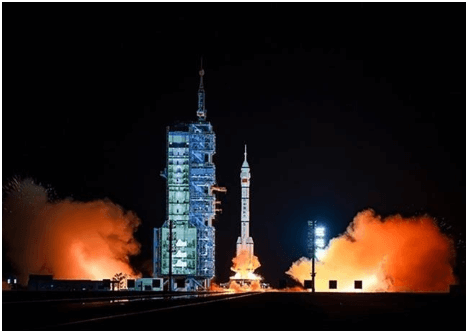
China Unveils Ambitious Lunar Mission: Pioneering Exploration of Moon’s South Pole for Future Breakthroughs.
China’s space agency has announced an ambitious new lunar mission set for late 2025, marking another significant milestone in the country’s rapidly advancing space exploration program.
This upcoming mission aims to explore the moon’s South Pole, a region of great scientific interest due to its potential water ice deposits. Such deposits are considered critical for the development of sustainable human outposts and future long-term space exploration, as they can provide essential resources like drinking water, breathable oxygen, and even rocket fuel. The announcement has generated excitement across the global space community, highlighting China’s growing capabilities in space exploration and its commitment to playing a leading role in humanity’s push beyond Earth’s orbit.
The Chinese lunar program has seen remarkable progress over the past few decades, steadily building on a series of increasingly sophisticated missions. This forthcoming mission to the moon’s South Pole represents the next logical step in China’s lunar exploration ambitions. The region is of particular interest due to its unique environmental conditions and potential resources. Unlike other parts of the moon, which experience extreme temperature fluctuations, the South Pole has areas of permanent shadow where temperatures remain cold enough to preserve ice.
These shadowed craters are thought to contain water ice deposits, a resource that has captured the attention of space agencies around the world, including NASA and the European Space Agency. If confirmed, these deposits could serve as a critical stepping stone for establishing a long-term human presence on the moon and enabling further exploration of the solar system.
China’s space agency has outlined several key objectives for the 2025 mission. Chief among them is the identification and analysis of potential water ice deposits within the moon’s shadowed craters. Advanced instruments will be used to map and study the distribution of ice and other volatiles, providing crucial data for future missions.
The mission will also focus on developing technologies for operating in the challenging environment of the lunar South Pole. The region’s rugged terrain and extended periods of darkness present significant engineering challenges that must be overcome to ensure the success of both robotic and human missions. To address these challenges, China’s engineers are developing new landing systems and autonomous navigation technologies that will allow the spacecraft to safely reach and explore its target locations.
One of the most exciting aspects of the mission is the potential for international collaboration. China has expressed a willingness to work with other countries and organizations in exploring the moon’s South Pole, a sentiment that has been welcomed by many in the international space community.
Collaboration could take the form of data sharing, joint experiments, or even the development of shared infrastructure on the lunar surface. Such partnerships could help reduce costs, accelerate scientific discoveries, and promote peaceful cooperation in space—a goal that many view as essential for the long-term success of humanity’s spacefaring ambitions. However, geopolitical tensions and differing space policies may present obstacles to full-scale collaboration, underscoring the importance of continued dialogue and diplomacy among spacefaring nations.
The mission is also expected to provide valuable insights into the geological history of the moon and the broader solar system. The moon’s South Pole region is thought to be home to some of the oldest and most well-preserved impact craters in the solar system, offering a unique window into the early history of planetary formation. By studying the composition and structure of these craters, scientists hope to gain a better understanding of the processes that shaped the moon and other rocky bodies in the inner solar system. The data collected could also shed light on the distribution of key resources and help inform the design of future missions to Mars and beyond.
China’s announcement has come at a time of heightened global interest in lunar exploration. In recent years, multiple countries and private companies have unveiled plans to explore and utilize the moon’s resources. NASA’s Artemis program, for example, aims to return humans to the lunar surface by the late 2020s, with a particular focus on the South Pole region. Similarly, several private companies are developing technologies for lunar mining and in-situ resource utilization, which could play a key role in supporting future human settlements on the moon. China’s 2025 mission will likely add further momentum to these efforts, sparking new innovations and collaborations that could help pave the way for a thriving lunar economy.
For the latest updates-click here.


